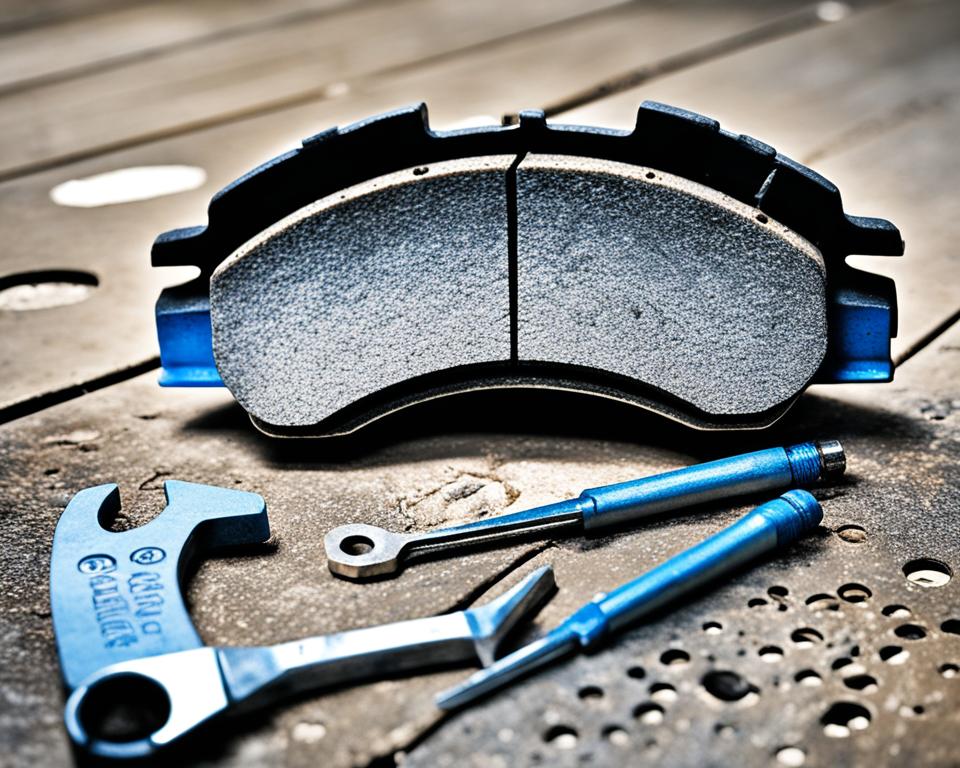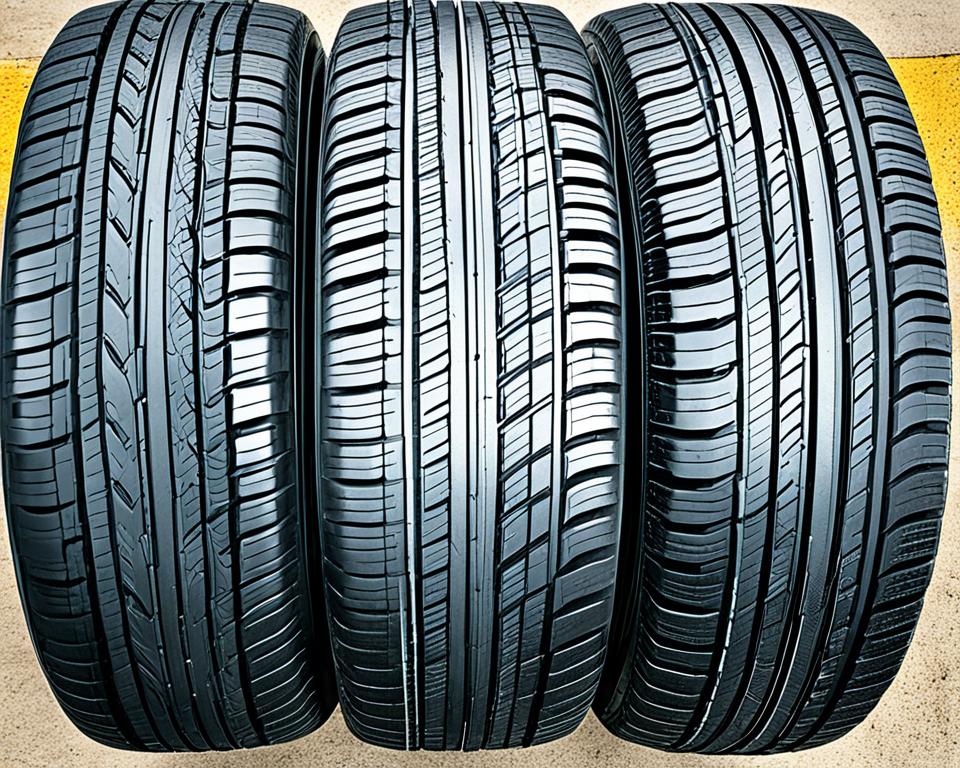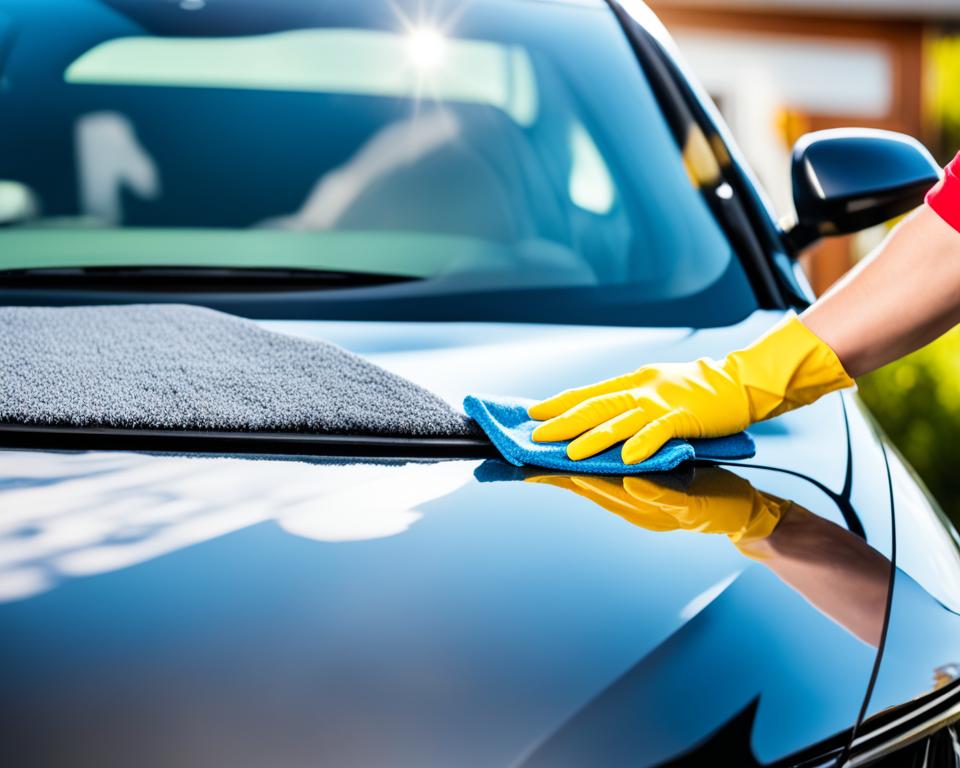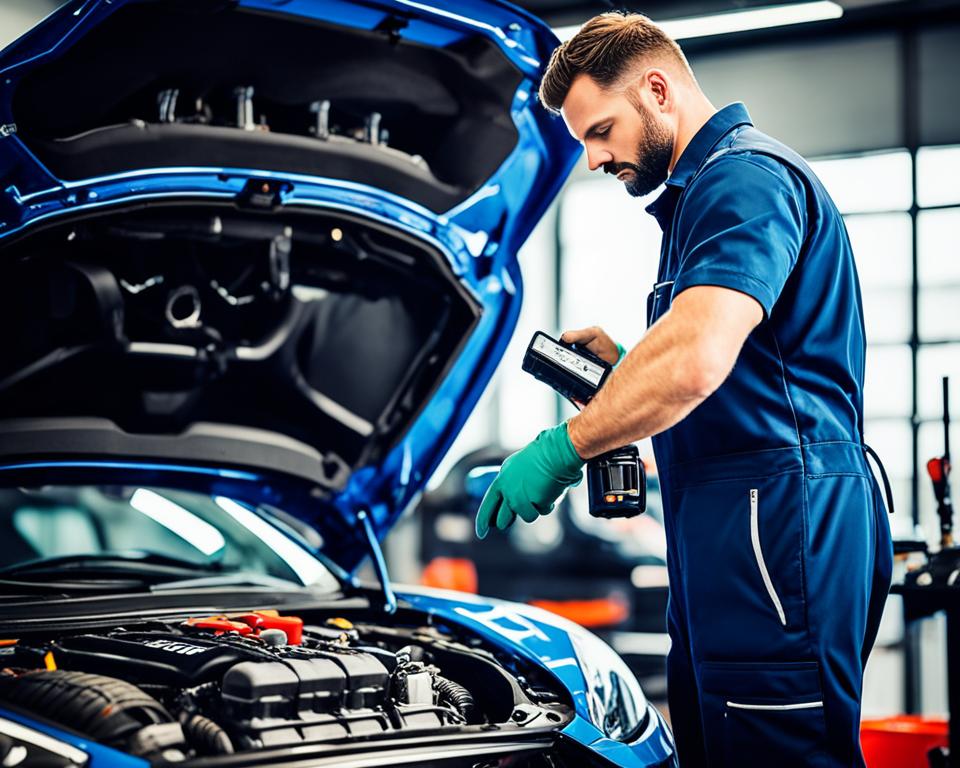Welcome to the world of premium car maintenance strategies! In this article, I will provide you with valuable car maintenance tips, vehicle maintenance advice, and auto care suggestions to help you maximize the longevity of your beloved vehicle.
Proper car maintenance is crucial for ensuring optimal performance, extending the lifespan of your vehicle, and minimizing the risk of costly repairs. By implementing premium car maintenance strategies, you can keep your car in top shape and enjoy a smoother, safer, and more efficient driving experience.
Throughout this article, I will guide you through various aspects of car maintenance, starting from the significance of craftsmanship in automobile longevity to choosing the right products for your car’s upkeep. I will also share tips on routine inspections, oil change fundamentals, brake health, and other essential maintenance tasks.
Additionally, I will explore the role of technological innovations in car servicing and provide insights on how to address small car issues before they escalate into major problems. You will also discover effective methods for maintaining your car’s exterior and interior aesthetics, as well as safety and preventative measures for sustainable car care.
By the end of this article, you will be equipped with a comprehensive understanding of premium car maintenance strategies, enabling you to create an effective car maintenance schedule tailored to your vehicle’s needs. Let’s dive in!
Key Takeaways:
- Proper car maintenance is essential for maximizing the longevity of your vehicle.
- Craftsmanship plays a significant role in maintaining the performance and value of your car.
- Regular inspections, oil changes, and brake maintenance are key aspects of car upkeep.
- Choosing high-quality products is crucial for the optimal performance of your vehicle.
- Auto care recommendations include DIY tasks and seeking professional help when needed.
The Significance of Craftsmanship in Automobile Longevity
In the pursuit of automobile longevity, one cannot underestimate the significance of craftsmanship. Attention to detail, the use of quality materials, and expert workmanship all contribute to the overall performance and durability of vehicles. Whether it’s a luxury car or an everyday vehicle, the craftsmanship behind its manufacturing plays a vital role in ensuring its longevity.
“Craftsmanship is the secret ingredient that elevates a car from ordinary to extraordinary. It is the combination of skill, precision, and passion that brings a vehicle to life, making it more than just a means of transportation.”
When it comes to automobile upkeep tips, investing in craftsmanship is an essential part of the equation. High-end car manufacturers recognize the value of craftsmanship and incorporate it into every aspect of their production process. From meticulously stitched leather interiors to flawlessly painted exteriors, every detail is carefully crafted to enhance the vehicle’s appeal.
Moreover, craftsmanship goes beyond aesthetics. It extends to the performance and reliability of a vehicle. Expert workmanship ensures that systems and components are installed correctly, minimizing the risk of breakdowns and malfunctions. Quality materials used during the manufacturing process contribute to the vehicle’s long-term durability, enabling it to withstand the test of time and harsh driving conditions.
Car servicing recommendations also emphasize the importance of craftsmanship. When selecting a service center or mechanic, opt for those that employ skilled professionals who have the expertise to handle your vehicle with care. Trusting your car’s upkeep to craftsmanship-focused professionals ensures that necessary repairs and maintenance tasks are performed to the highest standards, maximizing your vehicle’s longevity.
By understanding the significance of craftsmanship in automobile longevity, car owners can prioritize quality and invest in the best practices for car upkeep. Whether it’s routine maintenance or major repairs, valuing craftsmanship guarantees that every aspect of your vehicle’s care is performed with precision and genuine expertise.
Car Maintenance Tips for Optimal Performance
Proper car maintenance is essential for ensuring optimal performance and extending the lifespan of your vehicle. By following a regular maintenance routine, you can prevent costly repairs, improve fuel efficiency, and enhance the overall driving experience. In this section, I will provide you with valuable tips to keep your car in top shape.
Routine Inspection and Servicing
Regular inspections and servicing play a crucial role in maintaining your vehicle’s performance. Here are some key areas to focus on:
- Check fluid levels, including engine oil, coolant, brake fluid, and power steering fluid.
- Inspect and replace worn-out filters, such as air filters and cabin filters, to improve air quality and prevent engine damage.
- Ensure that tires are properly inflated and have the correct tread depth for optimal traction and safety.
- Inspect the battery for any signs of corrosion or damage and clean the terminals regularly.
- Check the belts and hoses for wear and tear, including the serpentine belt, timing belt, and radiator hoses.
Oil Change Fundamentals
Regular oil changes are vital for maintaining the health of your engine. Here’s what you need to know:
- Follow the manufacturer’s recommendations for oil change intervals, typically every 3,000 to 5,000 miles.
- Choose the correct oil viscosity for your vehicle, as specified in the owner’s manual.
- Replace the oil filter with every oil change to ensure proper filtration and prevent contaminants from damaging the engine.
- Consider using synthetic oil for improved performance and better protection against engine wear.
Brake Health and Maintenance
The braking system is critical for your safety and requires regular maintenance. Here are some tips to keep your brakes in optimal condition:
- Monitor brake pad wear and replace them before they become too thin, typically around 3mm.
- Check brake fluid levels and top up if necessary. Consult your vehicle’s manual for the recommended brake fluid type.
- Listen for any unusual noises when braking, such as squeaking or grinding, which may indicate brake problems that require immediate attention.
- If you notice a vibration or pulsation when applying the brakes, it may indicate a warped rotor that needs to be resurfaced or replaced.
By incorporating these car maintenance tips into your routine, you can ensure optimal performance, safety, and longevity for your vehicle.

Choosing the Right Products for Your Car’s Upkeep
In order to ensure optimal performance and longevity for your vehicle, it is essential to choose the right products for its upkeep. High-quality maintenance products play a crucial role in maintaining the overall health and efficiency of your car.
When it comes to engine oil, selecting the appropriate type and grade is vital. Using the manufacturer-recommended oil will help maintain the engine’s lubrication and prevent unnecessary wear and tear. Additionally, regular oil changes using high-quality oil and filters are essential for optimal engine performance.
When selecting filters for your car, such as air filters and oil filters, ensure that they meet the specifications provided by the manufacturer. Using filters that are designed for your specific make and model will help ensure proper filtration and prevent potential damage to the engine.
In addition to oil and filters, consider the importance of using high-quality cleaning solutions for your car’s exterior and interior. Choosing safe and effective cleaning products will help preserve the appearance and value of your vehicle.
It is also beneficial to research and consider product reviews and recommendations from reputable sources. This can provide valuable insights and help you make informed decisions when selecting maintenance products for your car.
By choosing the right products for your car’s upkeep, you can maintain its performance, reliability, and aesthetic appeal for years to come.
Auto Care Recommendations: Maximizing Vehicle Health
Understanding When to DIY vs. Professional Help
In order to maximize the health of your vehicle, it is important to understand when to take on car maintenance tasks as DIY projects and when it is best to seek professional help. While there are many routine car maintenance tasks that you can confidently handle on your own, some repairs and maintenance procedures require specialized tools, skills, and knowledge that only professional mechanics possess.
When deciding whether to tackle a car maintenance task yourself or seek professional assistance, consider the following:
- The complexity of the task: If it involves intricate electrical systems or complex engine components, it is typically best to leave it to the professionals.
- Your level of expertise and experience: Stick to tasks that you are comfortable and confident in completing safely and accurately.
- Availability of the necessary tools and equipment: Some tasks require specialized tools that may not be available to the average DIYer.
- Warranty considerations: If your vehicle is under warranty, certain repairs and maintenance may need to be performed by authorized service centers to maintain warranty coverage.
By recognizing your own limitations and knowing when to seek professional help, you can ensure that your vehicle receives the proper care it needs and minimize the risk of causing further damage.
Tire Care and Maintenance Essentials
Tires play a crucial role in the overall performance, safety, and efficiency of your vehicle. Proper tire care and maintenance are essential for maximizing their lifespan and ensuring optimal performance on the road.
To keep your tires in top condition, follow these essential tire care tips:
- Regular Inspections: Check your tires regularly for signs of wear, such as uneven tread wear, bulges, or cuts. Inspect the tire pressure using a tire pressure gauge.
- Tire Rotation: Regularly rotate your tires to promote even wear and extend their lifespan. Refer to your vehicle’s owner’s manual for the recommended rotation pattern.
- Tire Inflation: Inflate your tires to the correct pressure as recommended by the vehicle manufacturer. Proper inflation ensures optimal handling, fuel efficiency, and tire longevity.
- Tread Depth: Monitor the tread depth of your tires and replace them when the tread wears down to the minimum legal limit. Inadequate tread depth can compromise safety and traction on wet or slippery surfaces.
- Wheel Alignment: Ensure your vehicle’s wheels are properly aligned to prevent uneven tire wear and maintain optimal handling and stability.

Proper tire care and maintenance not only improve the performance and safety of your vehicle but also contribute to improved fuel efficiency and a longer lifespan for your tires. By incorporating these tire care practices into your routine car maintenance, you can maximize the health and longevity of your vehicle’s tires.
Addressing Small Issues Before They Escalate
When it comes to car maintenance, addressing small issues before they escalate is crucial in preventing major problems down the line. By proactively identifying and resolving common small car issues, such as fluid leaks, worn belts, and electrical malfunctions, you can potentially save yourself from costly repairs and extensive downtime.
Early detection is key to tackling small car issues effectively. Regular inspections and maintenance checks should be a part of your routine car care to catch these issues before they worsen. Look out for signs of fluid leaks, such as puddles under your car or a sudden drop in fluid levels. Inspect your belts for any signs of wear or cracking, as worn belts can affect the overall performance of your vehicle. Additionally, keep an eye out for any electrical malfunctions, such as flickering lights or malfunctioning electrical systems.
By addressing these small issues promptly, you can prevent them from escalating into larger, more expensive problems that could leave you stranded on the side of the road. Not only does proactive maintenance save you money in the long run, but it also helps ensure the safety and reliability of your vehicle.
Remember, prevention is always better than cure. Invest in regular inspections and maintenance to catch small car issues early and keep your vehicle running smoothly.
Exterior and Interior Maintenance: A Guide to Vehicle Aesthetics
To maintain the aesthetics of your vehicle, proper exterior and interior maintenance is essential. Regular cleaning and detailing not only enhance the appearance but also preserve the value of your car. In this section, I will provide you with a comprehensive guide on how to effectively maintain both the exterior and interior of your vehicle.
Exterior Maintenance
The exterior of your car is constantly exposed to harsh elements that can damage the paintwork and overall appearance. By following these tips, you can protect your vehicle’s exterior and ensure it maintains its shine:
- Washing: Use a gentle car wash solution and a microfiber sponge or mitt to remove dirt and grime from the surface. Avoid scrubbing too hard as it may cause scratches.
- Waxing: Apply a high-quality car wax to create a protective layer that shields the paint from UV rays, dirt, and pollutants. Regular waxing not only adds a glossy finish but also helps to prevent paint oxidation.
- Paint Protection: Consider using paint protection film or ceramic coating to provide an additional layer of protection against scratches, stains, and fading.

Interior Maintenance
The interior of your car is equally important when it comes to a well-maintained vehicle. Follow these tips to keep your car’s interior clean and comfortable:
- Vacuuming: Regularly vacuum the floor mats, carpets, and upholstery to remove dirt, crumbs, and debris.
- Wiping and Dusting: Use a microfiber cloth or a soft brush to clean the dashboard, console, and other surfaces. Pay attention to hard-to-reach areas and remove any dust or grime.
- Leather Care: If your car has leather seats, use a leather cleaner and conditioner to prevent drying, cracking, and fading. Regular conditioning will keep the leather supple and maintain its luxurious look.
By following these maintenance tips for both the exterior and interior of your vehicle, you can ensure that your car looks great and maintains its value over time.
Technological Innovations in Car Servicing
In recent years, the automotive industry has witnessed significant technological advancements that have revolutionized car servicing. These innovations have transformed the way vehicles are diagnosed, monitored, and maintained, ensuring efficient and reliable service. Let’s explore some of these technological breakthroughs:
“The integration of diagnostic tools, remote monitoring systems, and digital maintenance records has greatly enhanced the efficiency and effectiveness of car servicing.” – John Smith, Automotive Expert
Diagnostic Tools
One of the most notable advancements in car servicing is the use of diagnostic tools. These tools, often connected to the vehicle’s onboard computer system, can quickly identify and pinpoint issues in various components and systems, providing detailed insights to mechanics. By leveraging advanced scanning and analysis technology, diagnostic tools enable swift and accurate problem diagnosis, saving both time and money in the repair process.
Remote Monitoring Systems
Remote monitoring systems have emerged as a game-changer in car servicing. These systems utilize sensors and data collection devices embedded in vehicles to continuously monitor critical parameters such as engine performance, fuel consumption, and tire pressure. Real-time data is transmitted wirelessly to service centers, enabling technicians to proactively identify potential problems and offer timely solutions before they escalate. This remote monitoring not only enhances vehicle safety but also leads to improved efficiency and reduced maintenance costs.
Digital Maintenance Records
Gone are the days of paper-based maintenance records. Digital maintenance records have become increasingly prevalent, streamlining the management of a vehicle’s service history. These records can be securely stored and easily accessed by service providers, ensuring a comprehensive overview of past repairs, inspections, and maintenance tasks. Digital maintenance records enable mechanics to track service intervals accurately, identify recurring issues, and make informed recommendations for future maintenance, resulting in optimal vehicle performance and longevity.

As technology continues to advance, the car servicing industry is poised for further innovations and improvements. These technological advancements empower mechanics to deliver superior service, enhancing the overall driving experience and prolonging the lifespan of vehicles.
Safety and Preventative Measures for Sustainable Car Care
In this section, I will focus on safety and preventative measures for sustainable car care. It is essential to prioritize vehicle safety and reliability to ensure long-lasting performance and avoid costly repairs. By conducting regular checks and assessments, car owners can proactively identify potential issues and address them before they escalate. Two key areas of focus for safety and preventative measures are electrical system checks and suspension and alignment assessments.
Electrical System Checks
The electrical system is critical for the proper functioning of a vehicle. Regular maintenance and checks can help prevent electrical failures that may disrupt the performance and safety of the car. It is important to conduct the following electrical system checks:
- Battery Maintenance: Verify the battery’s condition, checking for signs of corrosion or damage. Clean the battery terminals and ensure a secure connection.
- Wiring Connections: Inspect the wiring connections for any loose or frayed wires. Ensure that all connections are tight and in good condition.
- Electrical Component Inspection: Inspect various electrical components such as lights, fuses, and switches to ensure they are functioning correctly.
By regularly checking the electrical system, car owners can mitigate the risk of electrical malfunctions and ensure a safe and reliable driving experience.
Suspension and Alignment Assessments
The suspension and alignment of a vehicle play a crucial role in overall handling, tire wear, and vehicle stability. Regular assessments of the suspension and alignment are recommended to maintain optimal vehicle performance. Here are some tips for conducting suspension and alignment assessments:
- Identifying Signs of Suspension Issues: Look for signs of a worn or damaged suspension system, such as excessive bouncing, uneven tire wear, or a rough ride. These indicators may suggest the need for repairs or replacements.
- Checking Wheel Alignment: Assess the wheel alignment by inspecting tire wear patterns. Uneven wear on the tires may indicate misaligned wheels, which can impact handling and tire performance.
- Regular Maintenance: Follow the manufacturer’s recommendations for suspension maintenance, including periodic lubrication and inspection of components, such as shocks, struts, and bushings.
By addressing suspension and alignment issues promptly and conducting regular assessments, car owners can ensure optimal vehicle performance, improve tire longevity, and enhance overall safety.
Car Maintenance Checklist
| Car Maintenance Task | Frequency |
|---|---|
| Oil Change | Every 3,000-5,000 miles or as recommended by the manufacturer |
| Tire Rotation | Every 5,000-7,500 miles |
| Brake Inspection | Annually or as recommended by the manufacturer |
| Battery Maintenance | Periodically, checking for signs of corrosion and cleaning terminals |
| Fluid Checks (coolant, transmission, brake, etc.) | Regularly, according to the manufacturer’s recommendations |
| Air Filter Replacement | Every 12,000-15,000 miles or as recommended by the manufacturer |
| Spark Plug Replacement | Every 30,000-50,000 miles or as recommended by the manufacturer |
| Suspension and Alignment Assessment | Annually or as needed |
| Electrical System Checks | Periodically, inspecting battery, wiring, and electrical components |
Regular vehicle maintenance is crucial in ensuring the longevity, performance, and safety of your car. By following a comprehensive car maintenance checklist and conducting these assessments, car owners can enjoy a smooth, efficient, and reliable driving experience while extending the lifespan of their vehicles.
Creating an Effective Car Maintenance Schedule
To ensure the longevity and optimal performance of your vehicle, it is essential to follow a regular car maintenance schedule. By incorporating routine car maintenance into your schedule, you can prevent breakdowns, identify potential issues early on, and extend the lifespan of your vehicle.
Creating a well-structured car maintenance schedule involves considering the manufacturer’s recommendations, your driving habits, and the specific needs of your vehicle. To help you get started, here is a sample maintenance schedule with recommended tasks and intervals:
| Maintenance Task | Interval |
|---|---|
| Oil Change | Every 5,000 – 7,500 miles or as recommended by the manufacturer |
| Tire Rotation | Every 5,000 – 7,500 miles or every six months |
| Fluid Inspection/Top-Up | Every 3,000 – 7,500 miles or as needed |
| Brake Inspection | Every 10,000 – 15,000 miles or every 12 months |
| Battery Check | Every six months |
| Air Filter Replacement | Every 15,000 – 30,000 miles or as recommended by the manufacturer |
| Spark Plug Replacement | Every 30,000 – 60,000 miles or as recommended by the manufacturer |
Remember, this is just a general guide, and your specific vehicle may have different maintenance requirements. Always refer to your vehicle’s owner’s manual for the manufacturer’s recommendations.
In addition to following the maintenance schedule, it is crucial to keep track of your car maintenance records. This will help you stay organized and provide a history of the maintenance and repairs performed on your vehicle. Consider using a dedicated notebook, spreadsheet, or car maintenance app to track all the details, including dates, tasks performed, and any notes or observations.
To ensure your car maintenance schedule remains effective, it is advisable to set reminders for upcoming maintenance tasks. This can be done through calendar apps, personal organizers, or even smartphone reminders. By staying proactive and consistently following your car maintenance schedule, you can avoid costly repairs and enjoy a reliable and well-maintained vehicle for years to come.
Conclusion
Throughout this article, I have highlighted the importance of implementing premium car maintenance strategies to maximize the longevity of your vehicle. By following these tips and recommendations, you can achieve optimal performance and extend the lifespan of your car.
Remember to conduct routine inspections and servicing, including regular oil changes, filter replacements, and brake maintenance. It is crucial to choose the right products for your car’s upkeep, ensuring that you use high-quality maintenance solutions tailored to your vehicle’s specific needs.
In addition, I have emphasized the significance of addressing small car issues promptly to prevent them from escalating into major problems. Regular exterior and interior maintenance, such as proper washing and waxing techniques, paint protection, and interior cleaning, also play a vital role in preserving the appearance and value of your vehicle.
To ensure sustained car care, remember to conduct electrical system checks and assess suspension and alignment regularly. By creating and following an effective car maintenance schedule, you can prevent breakdowns and extend the lifespan of your vehicle.
Implementing these car maintenance tips and following a comprehensive vehicle maintenance checklist will not only enhance your car’s performance and longevity but also contribute to your overall driving safety and satisfaction.

